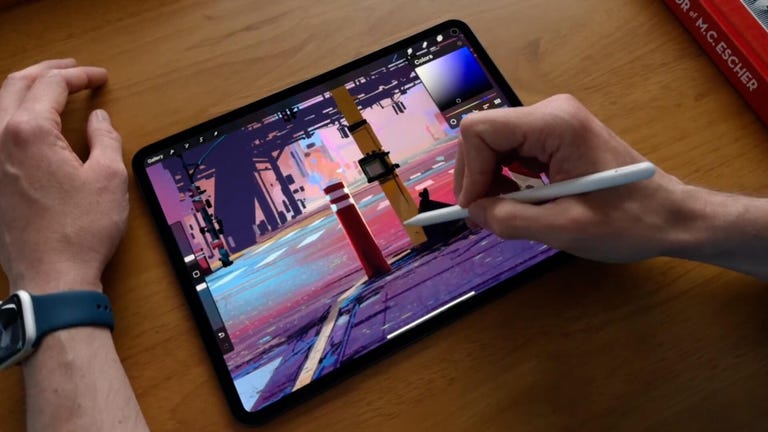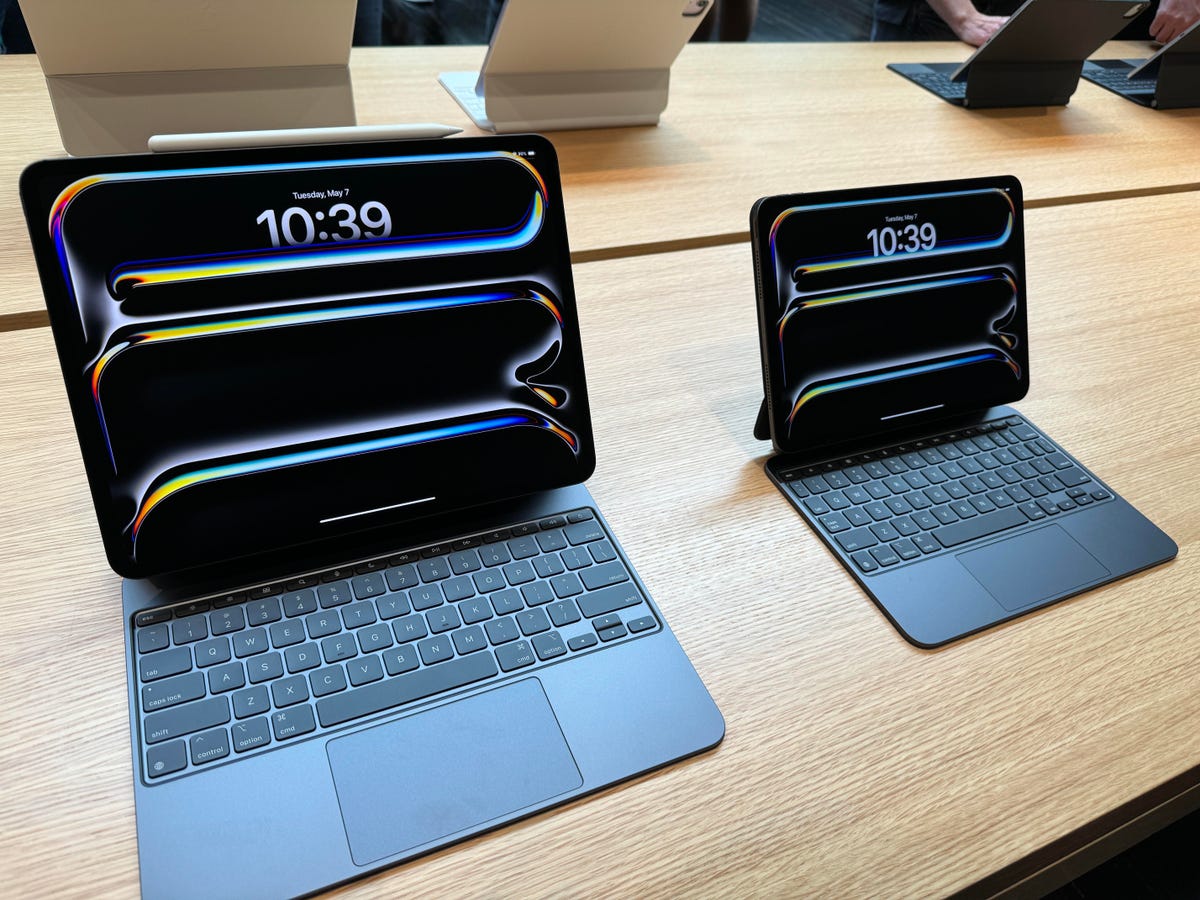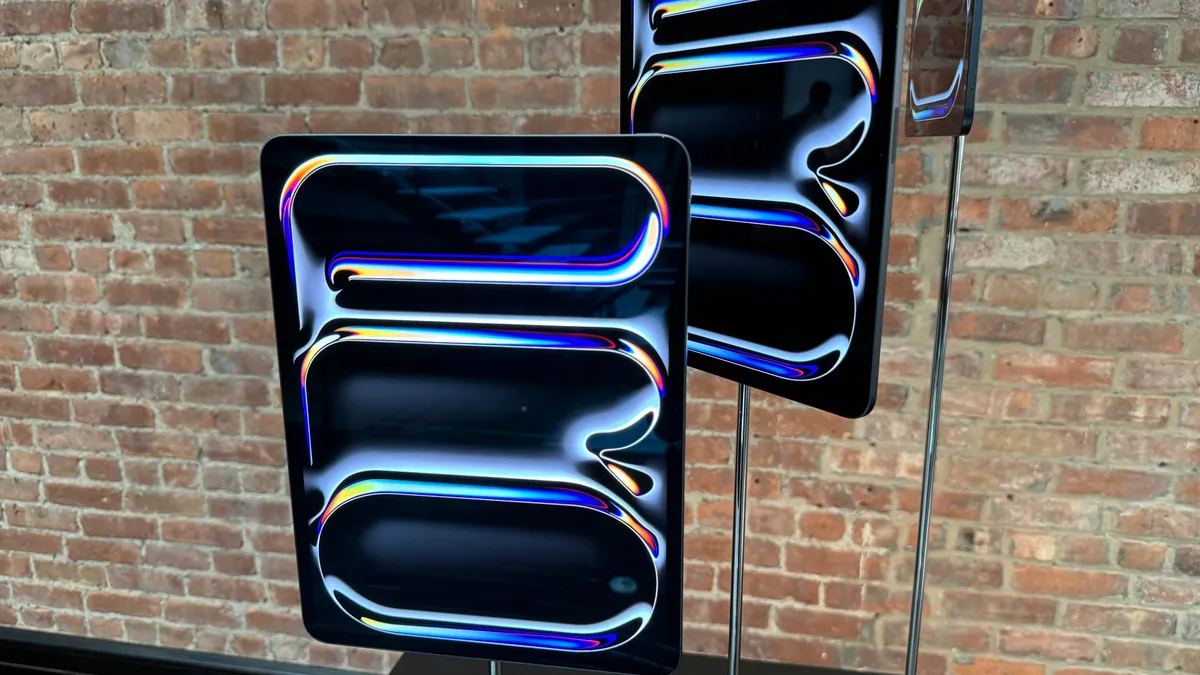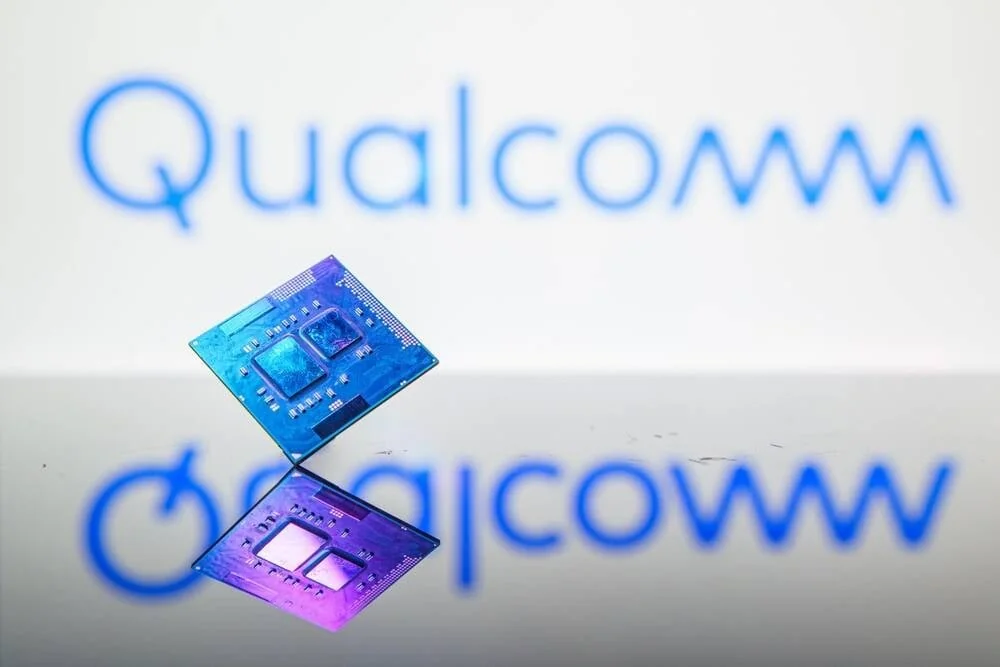After years without a new iPad, Apple sure did ‘Let Loose’, revealing two new Pros and two new Airs, plus a revamped Pencil and Magic Keyboards.
Apple has released new iPads for the first time since 2022. During their virtual “Let Loose” event, the company launched a new slate of iPads: two iPad Airs and two iPad Pros, both in 11- and 13- inch sizes. Some notable upgrades include the FaceTime cameras moving from the short edge to the long edge — finally! — and new Ultra Retina XDR OLED displays on the Pros, which can hit a peak brightness of 1,600 nits in HDR (and 1,000 full screen in SDR), just like the desktop Pro XDR Display. Additionally, the M4 chip has debuted on the iPad Pro, which now starts at $999.
The older 10th-gen iPad gets a price drop to $349 (£349, AU$599). Preorders for the new iPads are live now, and they ship next week.
A new $129 (£129, AU$219) Apple Pencil Pro has a better sensor, with haptic feedback, that responds to squeezing and twisting; the latter, called Barrel Roll, can twist to reshape brushes. Squeeze pulls up context menus, and it supports Find My. The Pencil is supported by the new Airs as well as the new Pros, but it’s not compatible with the older Pros, at least according to Apple’s site. Grr.
These are the first new iPads since the 2022 iPad Pro M2 model. The relocated FaceTime camera on the long edge means no more calls with disconcerting sideways eyelines and more natural positioning for Face ID. To date, the 10th-gen iPad has been the only one with that layout.
The redesigned Pros are now thinner, though in similar 11 and 13-inch sizes, thanks to the long-awaited OLED displays. To generate extra brightness — peak brightness of 1,600 nits in HDR — they combine two OLED panels, dubbed Tandem OLED, and Apple calls it Ultra Retina XDR. As with the desktop displays, there’s a Nano Texture option, which is Apple’s glare-free layer. They start at $999 (£999, AU$1,699) for the 11-inch and $1,399 (£1,299, AU$2,199) for the 13.
An M4 chip launches with the Pro, bypassing the M3, though it just seems like a faster version which incorporates new display technology intended to drive the new OLED displays. Otherwise, it uses the M3-generation 3-nanometer technology, with four performance cores, six efficiency cores, 10 GPU cores and a new display controller to support the HDR OLED screen. And it’s got better thermals to compensate. They still come in silver and space black.
There’s a new rear camera, 12-megapixel, f1.8 Smart HDR, with lidar and better TrueTone flash for document photography; the new flash helps remove shadows in documents. The Pro offers up to 2TB storage, and there’s a 5G option.
As usual, the new iPad Airs are, in large part, former iPad Pros. They come in a redesigned 11-inch and new 13-inch sizes, albeit with the older Liquid Retina technology rather than the mini LED of the Pros. The 11 has landscape speakers with spatial audio, while the 13-inch has extra bass. They both sport the M2 chip, and new blue and purple colors join the line. There are new 512GB and 1TB options, starting at $599 (£599, AU$999) for the 11-inch and $799 (£799, AU$1,299) for the 13.

There’s also a new Magic Keyboard for the iPad Pro that has the same floating design, but adds function keys and a larger trackpad with haptic feedback. It starts at $349 (£349, AU$579).

Correction, 3:01 p.m. PT: An earlier version of this article misstated the type of chip available in one of the the new iPad Air models. Both new Airs incorporate M2 chips.




